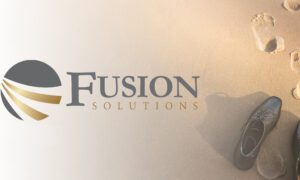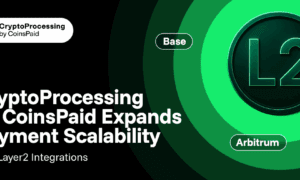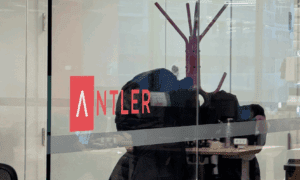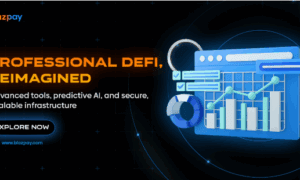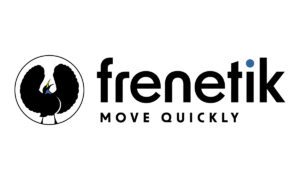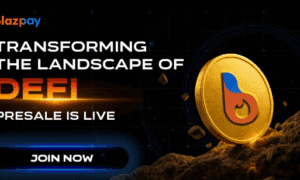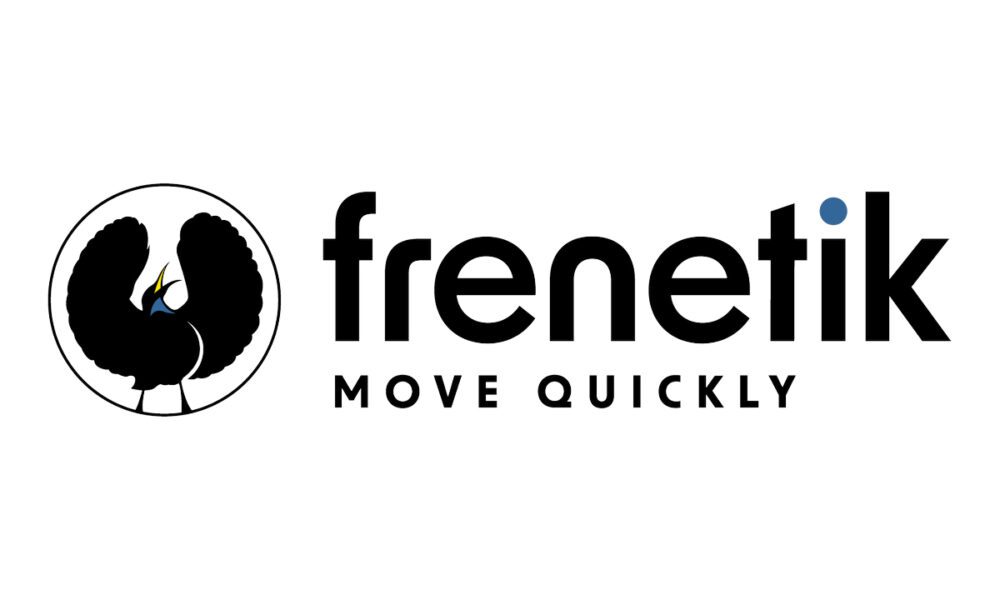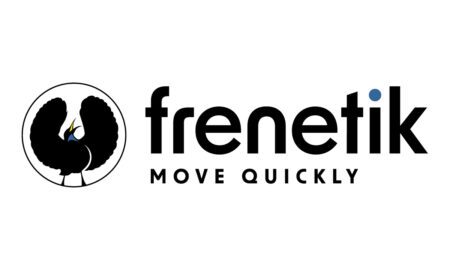Unique Problem-Solving Methods: 18 Startup Success Stories
Discover unconventional problem-solving methods that have propelled startups to success. This article presents a collection of innovative strategies, backed by insights from industry experts and real-world examples. From building communities to embracing diverse perspectives, these unique approaches offer fresh solutions to common challenges in the startup world.
- Build Community, Not Just Products
- Test Worst Ideas to Find Best Solutions
- Simplify Projects with Reverse Scoping
- Adapt Wall Street Tactics for AI Insights
- Map Non-Negotiables to Spark Innovation
- Sketch Problems to Uncover Hidden Solutions
- Act Out Customer Journeys for Insights
- Embrace Stakeholder Perspectives for Solutions
- Systematize with Automate, Delegate, Review
- Step Back to Move Forward
- Tap Non-Tech Teams for Product Insights
- Boost Efficiency with Context Blocking
- Test and Pivot Based on Data
- Allow Issues to Rest for Fresh Perspectives
- Stay Close to Customers, Avoid Premature Scaling
- Cross-Industry SEO Tactics Boost Traffic
- Empower Engineers with User-Centric Approach
- Internal Tools Can Become Public Solutions
Build Community, Not Just Products
Here’s one unconventional problem-solving technique we used that completely shifted our trajectory: we stopped thinking like a startup and started building like a community.
When we faced the classic startup challenge of limited resources, zero brand trust, and an overwhelming amount of information and companies present in the tech landscape, we didn’t try to outspend or outcompete. In fact, we invested $0 on ads so far. Instead, we built a community-centered ecosystem, focused on sharing curated knowledge, creating tangible value, and giving early access to the most advanced AI tools—long before it was trendy.
We invited our members, startups, solopreneurs, and visual creators to become active collaborators. We opened up our stack, offered our workflows, shared our advanced GPTs, and asked for nothing in return but feedback. That vulnerability built trust. In turn, that trust transformed into recurring members, tool adopters, and clients.
This community-first, tech-second approach helped us grow from a niche project to a 25,000+ network with 535+ active members and 50+ partners. Today, we are a pioneering AI-powered boutique consultancy, automation agency, and thriving global hub. From our AI suite for digital PR at Premium Release to our virtual assistant Black Agent and our AI entrepreneurship course on Maven, every solution was born inside our ecosystem.
We didn’t just overcome the credibility gap; we redefined how AI-powered startups can build with purpose. If you believe AI should empower rather than replace, we invite you to join our next chapter: become a member or work with us to unlock the next level of productivity and creativity for humans.
Andrea Marchiotto, CEO & Founder, BlackCube Labs
Test Worst Ideas to Find Best Solutions
One unconventional technique I’ve used is deliberately pressure-testing the worst idea in the room to clarify the best one.
When a team is stuck debating options—feature sets, pricing models, GTM angles—I’ll suggest building and shipping the least promising idea in its simplest form. Not because I think it’ll win, but because it forces speed, data, and emotional detachment. It creates contrast. And contrast gives clarity.
In one case, testing the “loser” idea uncovered a completely different user pain point that had been masked by internal assumptions. That insight ended up driving the next version of the offer, and performance jumped.
The biggest challenges in early-stage or shifting teams usually aren’t technical—they’re cognitive. You need a system that gets you out of your own head. Running fast tests on the ideas you’re secretly hoping fail is a great way to do that. It moves you from guessing to knowing, quickly.
John Mac, Serial Entrepreneur, UNIBATT
Simplify Projects with Reverse Scoping
One unconventional technique we’ve used is what we call “Reverse Scoping.” Instead of starting with a list of client requirements and building up, we start by asking: “What’s the absolute minimum outcome we need to prove value?” Then we work backward to scope the simplest path to that outcome—even if it means skipping features clients initially asked for.
We first used this on a complex time-tracking and resource management platform for a civil engineering firm. The client had a long wishlist of features but tight timelines and budget. By applying Reverse Scoping, we reframed the project around one critical outcome: “Can we accurately log and export time data per employee, per project?” Everything else—dashboards, role filters, report visualizations—was deferred or simplified.
This approach let us:
- Deliver an MVP that solved the client’s core problem in 3 weeks
- Earn trust early, which opened the door for a second-phase contract
- Avoid scope creep and keep dev momentum strong
Reverse Scoping turned what could’ve been a bloated, delayed project into a fast success. It’s now a core part of how we tackle custom builds, especially when clients have ambitious ideas but limited time or budget.
Nicholas Malan, Founder, DevIgnite
Adapt Wall Street Tactics for AI Insights
During our early days, we faced a critical challenge in making our AI financial analysis accessible to retail investors. Traditional approaches weren’t effective—our initial user feedback showed that people found the outputs too complex and overwhelming.
I drew from my Wall Street experience, specifically the “morning meeting” format used by research analysts. At these meetings, complex market insights had to be distilled into 2-minute pitches. We adapted this concept to create what we call the “2-minute intelligence format”—a structured way for our AI to present financial analysis that even a busy professional could grasp during their morning coffee.
The results were remarkable. Our user engagement increased by 300% within two months of implementing this format. For example, instead of providing 20 pages of analysis on Apple stock, our AI now delivers three key insights, two actionable recommendations, and one contrarian viewpoint—all within a 2-minute read.
This approach has become central to our product development. We’ve since applied it to other features, like our AI Stock Picker, which now follows the same principle: clear, concise, and actionable insights that respect our users’ time while maintaining analytical depth.
The lesson was powerful: sometimes the best solutions come from cross-pollinating ideas from different industries. What worked for Wall Street analysts could be reimagined for AI-driven retail investing.
I’d be happy to share more specific examples of how we’ve implemented this approach or discuss other unconventional problem-solving techniques we’ve used in building our AI platform.
Fei Chen, Founder & CEO, Intellectia.Ai
Map Non-Negotiables to Spark Innovation
I’ve built five startups, and one unconventional approach I use is something I call reverse constraint mapping. In this approach, instead of starting with what’s possible, I start with what’s non-negotiable. This forces me and my team to innovate within the real boundaries of the business instead of getting stuck chasing ideal scenarios that don’t even exist.
The first time I used this was during a cash crunch in one of my companies. We were behind on a critical product update, and pressure was coming from all sides. We couldn’t afford to delay the launch because we didn’t have the budget to bring in help, and our team was already stretched thin. Every idea we tossed around seemed to hit the same wall—not enough time, not enough people, not enough money.
I could feel the team getting stuck because the problem felt too big and too messy to solve.
That’s when I decided to try something different. I called a meeting and said, “Let’s stop trying to fix everything at once. Instead, let’s start with what we absolutely know we can’t change.”
I asked each person to name one hard limit they were working under. We made a list: No new hires. No timeline extensions. No budget increases. That list became our map, and here’s where things started to shift.
Once we wrote those constraints down, something clicked. The mood changed. Suddenly, we could see the edges of the problem clearly, and that helped us see the possibilities within it. We restructured a few internal roles, repurposed tools we already had, and cut down the feature list to focus only on what truly mattered. This resulted in our product being shipped on time and, more importantly, the team felt like they had done something smart and revolutionary, which boosted the overall morale in the company.
That moment changed how I lead under pressure. I stopped treating constraints as blockers and started treating them as the frame. When you begin with what you can’t change, you force your brain to stop reaching for ideal solutions and start working with the real ones. We won because we stopped pretending we had unlimited options and got serious about solving the problem inside the box we had.
Jeff Mains, Founder and CEO, Champion Leadership Group
Sketch Problems to Uncover Hidden Solutions
I began solving problems by sketching them. Literally, using pen and paper. No bullet points, no outlines, just a quick, messy visual map of the problem with every moving piece drawn out. The more I sketched, the more connections emerged that I never noticed while typing. The process slowed my thoughts down just enough to spot what was missing. Sometimes the solution appeared halfway through the drawing. Sometimes it was what I chose not to draw that revealed the most.
The brain thinks in layers, but most of us try to solve issues in a linear fashion. Sketching forced me to externalize the chaos in a way that words alone could not. I stopped obsessing over the perfect answer and started noticing patterns. When things felt stuck, such as timeline bottlenecks, communication breakdowns, or role confusion, I simply started drawing the flow. It worked because it changed how my brain processed the problem. And it took less than five minutes.
So, if you are stuck, grab a blank sheet and draw the friction instead of describing it. No technology. No structure. Just shapes, arrows, and questions. That shift alone pulled me out of dozens of ruts. Sometimes the fastest way forward is to draw what is holding you back.
Kiara DeWitt, RN, CPN, Founder & CEO, Injectco
Act Out Customer Journeys for Insights
One unique way we tackled the problem at The Happy Food Company was to do what we called “customer journey roleplay.” When sales of hampers dipped unexpectedly, before we even looked at any data, we acted out the whole journey ourselves, from browsing the website to unboxing the order.
What we found were friction points that we had no idea were happening when we were taking this view from behind the screen: confusing bundle offers, muddled delivery expectations, and anticlimactic packaging experiences.
By exploring the journey from the eyes of the customer—literally—we redesigned the website layout, simplified product names, and added warm handwritten notes to all the boxes. Within a month, we increased our conversion rates by 22%.
The takeaway? Sometimes the real insight is not in the data but in the emotional response. Don’t just analyze your customer journey; experience it yourself. It’s far more revealing than any spreadsheet.
Mary Case, Founder, The Happy Food Company
Embrace Stakeholder Perspectives for Solutions
One unconventional problem-solving technique that has worked brilliantly for me is embracing the situation from the perspective of those affected. When you run a business, you’re not the only one affected by the problems you face. The problems you face also affect internal and external stakeholders. So, when you evaluate challenges from the viewpoint of different stakeholders, it enables you to consider broad possibilities when it comes to tackling the issue. You don’t just think about yourself. You think about others who are affected by the challenges you currently face. It promotes relatability and enables you to go the extra mile when it comes to finding viable fixes for the problems you face.
This approach has helped us tackle countless challenges head-on, no matter how critical they may be, from pricing strategies to workflow inefficiencies. Sometimes the best way to solve any problem is to see it through a new lens. Being self-centered will only limit your potential.
Syed Balkhi, Founder, WPBeginner
Systematize with Automate, Delegate, Review
One of the most unconventional but effective problem-solving methods I’ve used in my startup is what I call “Automate, Delegate, Review.”
When I first started scaling, I tried to do everything manually—every email, meeting, update, and post. It was chaos. I was working 12-hour days and still dropping the ball.
I knew I needed to save time, but I didn’t want to sacrifice quality or the personal touch. So I built a simple system:
- Automate repetitive tasks: I started by automating anything that didn’t need my input. Client onboarding? Calendly handled it. Project updates? ClickUp automated them. Social media? Scheduled in batches.
- Delegate with clarity: For tasks needing a human touch—like content, support, or design—I built SOPs and handed them off. But the key wasn’t just delegation—it was clarity. I gave team members ownership, not checklists.
- Review everything regularly: This is where most people mess up. Automation without oversight leads to junk. I set weekly reviews to check results:
- Are our automations working?
- Are clients happy?
- Where’s the friction?
This one system helped me reclaim dozens of hours each week and improve service quality. It also revealed blind spots—like when auto-emails went out at the wrong stage or when client updates lacked personalization.
One big win? We automated our lead funnel but kept key interactions—like proposal reviews—manual. That balance between efficiency and personal connection boosted close rates by 30% in 60 days.
The takeaway? Don’t try to solve business problems with tools alone. Structure matters. You need a system that scales and adapts.
“Automate, Delegate, Review” isn’t flashy, but it turned a stressed-out solo founder into a systematized, scalable operation. It’s how I now solve most challenges:
- Start small
- Optimize often
- Keep the human touch where it counts
Nicholas Robb, UK Design agency, Design Hero
Step Back to Move Forward
Ironically, sometimes stopping is the best strategy. When you push too hard for too long, everything starts to blur. Even straightforward issues can feel overwhelming, and decision-making grinds to a halt. You get stuck in a mental loop that makes clarity nearly impossible.
So when I sense that happening—when my team hits that wall—I suggest we step away. Not for an hour, but for a full day or two. In my experience, that’s the amount of space it takes to truly reset our thinking.
It can feel uncomfortable, especially in a fast-paced business like ours, where action is often seen as progress. But giving the brain a break isn’t giving up; it’s just a smarter way of approaching a deadlock.
Recently, we were overhauling our internal tracking system, and no one could agree on the structure. Everyone had strong opinions, but the more we talked, the more stuck we became. Tensions rose, decisions got reactive, and the ideas coming forward weren’t solving anything. So I hit pause. No Slack threads, no whiteboard debates, no more conversation on the topic for the rest of the week. We shifted our focus to unrelated tasks.
And just like that, the following Monday, someone offered a solution in five minutes flat. It was clear, effective, and something we’d completely missed before.
That experience reinforced something I now deeply believe: sometimes the best way forward is to step back. Let the pressure drop, clear the mental clutter, and give creativity the breathing room it needs.
Linn Atiyeh, CEO, Bemana
Tap Non-Tech Teams for Product Insights
Once, during one of our worst product builds ever, our engineering team was stuck. All the sprint planning and whiteboarding weren’t moving the needle. So I did something a bit more unconventional—I brought in operational and customer support people. They were the ones who heard complaints daily, dealt with broken workflows, and knew exactly where things were frustrating for users.
And guess what? In one such meeting, they identified insights we had never even considered—such as a form flow that was completely incomprehensible to real users and a “smart” feature that created more confusion than value. Their feedback completely changed the direction we were heading for the feature, and likely saved us weeks of wasted development time.
The moral of the story: If you’re designing for real people, talk to the people who interact with them. Sometimes, your best problem solvers aren’t writing code, but are instead the people responding to tickets.
Jason Hishmeh, Author | CTO | Founder | Tech Investor, Varyence
Boost Efficiency with Context Blocking
One unconventional problem-solving technique that has transformed our operations is what I call “context blocking.” Unlike traditional time management, I organize my schedule—and now our company’s workflow—around cognitive contexts rather than rigid time slots.
This approach came directly from my experience running a 3PL before founding my company. In logistics, we know that batching similar activities maximizes throughput—whether processing similar SKUs or optimizing delivery routes. I realized the same principle could apply to knowledge work.
We faced a significant challenge about 18 months ago: our account managers who match eCommerce brands with 3PLs were struggling with constant context-switching between prospecting, onboarding, and relationship management. This led to mental fatigue, missed details, and ultimately, customer satisfaction issues.
Rather than adding headcount (the conventional solution), we completely restructured our workflow. We designated different days for different contexts—Tuesdays for vendor evaluations, Wednesdays for customer conversations, Thursdays for internal problem-solving. This eliminated the cognitive load of constantly pivoting between different mindsets.
The results were remarkable. Our account managers now handle 30% more clients with higher satisfaction scores. When someone is focused on customer acquisition all day, they stay in that strategic lane rather than pivoting between sales calls, warehouse operations, and technical integration questions within hours.
It’s counterintuitive in today’s “always-on” business culture, but by creating boundaries and respecting the brain’s need for focused context, we’ve built a more efficient operation. The logistics industry taught me that optimization isn’t always about speed—sometimes it’s about designing the right process flow.
Joe Spisak, CEO, Fulfill.com
Test and Pivot Based on Data
I very much favor the “test then pivot” approach. We use data to establish the best possible assumptions, and then we put that data to the test. If something doesn’t work, we pivot; if it does, we keep the winner and add more things to test. You’d be surprised how many problems you can solve by trying to fail at volume.
Shah Dudayev, Founder, Frootful Ventures
Allow Issues to Rest for Fresh Perspectives
Something that has worked well for me, even if it is out of the norm, is leaving the issue unattended for precisely 48 hours.
I would understand how this might sound illogical, particularly when everyone is in a rush to meet deadlines, especially in the startup ecosystem. However, there was a time when we hit a serious bottleneck with one of our product launches. Everyone was stressed, solutions were not working, and it felt like there was no forward traction.
So I instructed the team: “Let’s step back. No emergency Slack threads; no red-phone style calls.” This issue had to sit for two days while we focused on something completely different. And quite frankly, it solved everything. People returning after the two days had fresh perspectives and calmer ideas, and one teammate spotted a simple fix because we had been so battered by the problems that seemed to have no escape.
This taught me that sometimes it is good to leave issues alone for some time rather than continuously scratching their surfaces.
Oleh Stupak, CEO & Co-Founder, Mgroup Shopify Agency
Stay Close to Customers, Avoid Premature Scaling
One unconventional problem-solving move we made was refusing to “scale” too early. Everyone talks about product-market fit, but most startups rush to build systems that end up distancing them from their customers. We did the opposite. Our founder personally answered support emails. We got on calls with confused users. We treated every piece of friction as a signal, not a nuisance. That’s how we knew to prioritize things like joint accounts, more index options, and better funding flows. The takeaway? Don’t buffer yourself from real feedback. Early on, the fastest way to build something people actually want is to stay close enough to feel the friction.
Amberly Jones, Head of Growth, Frec Markets
Cross-Industry SEO Tactics Boost Traffic
One unconventional technique I’ve relied on is reverse-engineering successful SEO strategies from completely unrelated industries. For example, I adapted tactics from a local hospitality business to a fitness startup, improving organic traffic by over 35% in three months. I always try to think outside the box because innovation, not tradition, wins the game of digital marketing.
Jaymie Dean, Founder, J Aura
Empower Engineers with User-Centric Approach
One of the most effective strategies we’ve implemented is building a flat, engineering-centered team where engineers don’t just write code—they also think deeply about the product. Instead of passing ideas through layers of product managers or numerous meetings, our engineers are responsible for understanding what users need and building the right solution from start to finish.
To achieve this, we strive to keep engineers as close to the user as possible. They regularly watch recordings of real user sessions, review how people interact with the product, and observe where users encounter difficulties or frustrations. This kind of direct insight helps them make better decisions, without needing everything detailed in a specification document.
This approach has proven particularly beneficial in the development of our customizable deck editor and multi-agent AI system. These features emerged from engineers noticing patterns in user behavior and understanding what would actually save users time—not just what sounded good in theory. The result was a product that felt intuitive and useful from the outset.
Allowing engineers to take full ownership might seem risky, but for us, it has been a tremendous success. It keeps the team agile, focused, and connected to the real problems we’re solving.
Roman Martynenko, Fullstack Software Engineer, Founding Engineer, Henry AI
Internal Tools Can Become Public Solutions
We didn’t set out to build a public “one-click image converter” at all. Originally, we were just trying to solve a persistent problem in our SEO agency—dealing with images. Every day, we had to convert, resize, compress, and rename dozens (sometimes hundreds) of images to meet SEO standards for different clients. It was repetitive, time-consuming, and completely disrupted our workflow.
So we created a small internal tool just for ourselves. One button. Upload an image, and it would instantly convert it to WebP, compress it for speed, rename it using SEO-friendly formats, and resize it based on platform specifications. It saved our team hours every week.
Soon, people from other departments started using it. Then a client saw it and asked, “Can we get access to that tool?” That’s when we realized: this wasn’t just useful for us; every marketer and SEO professional faces the same challenge.
We improved the UI, made it public, and that’s how our one-click image converter was born.
In our experience, the best tools come from solving your own real-world frustrations, because if it improves your workflow, chances are it can improve someone else’s too.
David Reynolds, Digital Marketer, JPGHero
Related Articles
- Crowdfunding Success Stories: Inspiring Projects that Took Off with
- Building Products That Solve Real Problems: An Interview … – TechBullion
- ‘People are the hidden force behind any innovation’: Sergey Bunas




